When to plant petunia and how to pick it correctly
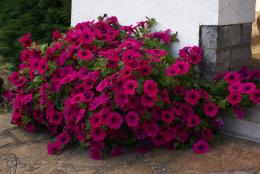
Petunia is a flower of amazing beauty. It is grown both in garden plots and on balconies, and sometimes even as a houseplant. In order for petunia to grow and develop well, the proper conditions must be created. Petunia is a rather whimsical plant, therefore, before you start growing these flowers, you should familiarize yourself with the rules for planting and caring for them.
Content
- What types of petunias are there?
- When to start planting and choosing seeds
- Preparing the container and soil for seedlings
- Sowing seeds and caring for seedlings
- Picking
- Planting in open ground and fertilizers
What types of petunias are there?
Petunias are distinguished by a variety of varieties; there are hybrids and subspecies. In general, all petunias can be divided into three groups.
Bush petunias differ in their size. These can be either miniature plants, up to 25 cm in height, or tall bushes, reaching 70 cm. The sizes of flowers also vary: from small - 4 cm, to large, with a diameter of 13 cm. This variety is chosen for planting in open ground on a garden plot . Popular varieties: Grandiflora, Multiflora, Milliflora.
Ampelous petunias. They branch poorly, they grow mainly in length. Usually they are immediately planted in a hanging container, placing the seeds closer to each other. Hanging petunias look very beautiful on the balconies of city apartments, forming a flower waterfall.
Among the varieties of this type, the most popular are: Pearl Surf, Light Wave, Waterfall.Cascade petunias. Varieties of this species are used to decorate gazebos. The most spectacular plants are Rose, Typhoon, Cherry.
Before you start growing petunias, you need to decide on the plant variety. The variety is chosen taking into account where the adult plant will be placed: in the open ground, on the balcony in a flowerpot, in a flower pot.
When to start planting and choosing seeds
Petunia is a light-loving plant and requires sufficient light to grow. Therefore, you need to start growing seedlings no earlier than March. Most types of petunias are grown in March. Ampelous petunia is grown in January.
If planting was carried out in compliance with all the rules, then after five days the first shoots will appear. Despite the rapid germination, seedling will grow very slowly, since the root system develops first.
To grow a beautiful lush flower, you should choose the right planting material. Seeds for planting a flower are purchased at a specialized store. You should not purchase a package with a large number of seeds. There should be no more than 10 pieces in a bag.
There are coated petunia seeds. They are enclosed in a special shell, all the necessary microelements have already been added. It is much more convenient to sow such seeds, but if there is not enough moisture, they will not germinate.
Preparing the container and soil for seedlings
Deep boxes are not suitable for petunia seedlings. The height of the landing container should not exceed 10 cm. You can choose:
- plastic cups
- peat tablets
- plastic container
Ampelous varieties can be planted directly in hanging containers or flowerpots. To place the seedlings, choose a lighted place.The soil for seedlings is prepared in the fall. The composition of the soil affects the quality of seedlings. To plant petunias, prepare a mixture of equal parts:
- garden land
- sand
- peat
- humus
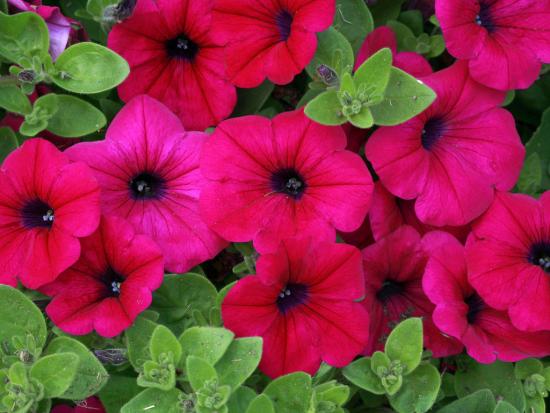
You can purchase ready-made soil mixture. Before loading soil into containers for planting, drainage is laid out at the bottom.
Sowing seeds and caring for seedlings
If the seeds are small, then they are mixed with sand and evenly distributed over the surface of the planting container, without sprinkling anything on top. Sowing is carried out in moist soil. Water the crops using a spray bottle; you cannot pour water on top, otherwise the seeds will go deeper and will not sprout or will sprout very late.
After five days, shoots should appear. They will need to be thinned out, leaving the strongest and healthiest plants. When leaves appear, the watering method will need to be changed. Now the plant is watered under the root, preventing water from getting on the leaves. If drops of water do end up on the leaves, they need to be carefully shaken off. There is no need to water the seedlings abundantly.
soil You need to regularly loosen it with a toothbrush, making sure that it does not dry out. It is important to observe the temperature regime. During the day it should be + 20 degrees, and at night + 16.
Picking
Picking - transplanting seedlings into separate cups. Petunia tolerates transplantation well, and yet, the transplantation rules should be followed:
- Prepare the container for picking and the soil
- Seedlings are watered before transplanting
- Carefully remove the bushes, you can use a toothpick and place them in the holes
- The soil does not need to be compacted intensively, only slightly strengthened so that the plant does not fall
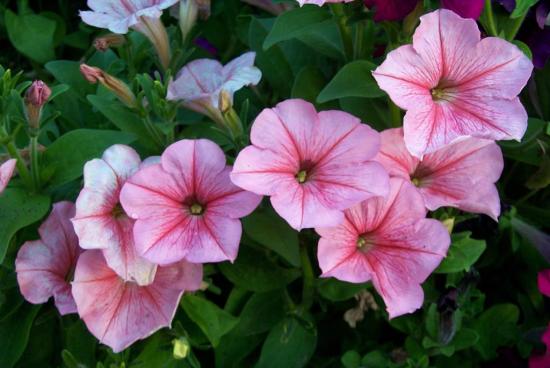
If the roots are very long, they need to be pinched a little. After transplanting, the seedlings are watered under the root with warm water.Picking is done when the third true leaf appears on the plant. Petunias have a well-developed root system, so they require a lot of space for normal development. Therefore, they take in such a container so that the flower does not feel crowded in it.
Planting in open ground and fertilizers
Before as disembark seedlings in open ground, you need to harden them. This is done in two weeks. A flower bed for petunias is chosen in well-lit areas. The soil should not be clayey. Planting is carried out taking into account climatic conditions. In Siberia this will be the beginning of June, in regions with a warm climate - May.
Rain and wind can affect the growth and flowering of petunias. In cold weather it may stop blooming. In order for the plant to acquire a beautiful shape, vertical shoots must be periodically trimmed, and faded flowers must be removed so that new buds can form.
Petunia can grow successfully without any additional feeding. The plant should be fertilized so that it becomes more luxuriant and produces more flowers. Fertilizing is carried out using conventional fertilizers, which include a complex of mineral substances.
The procedure is repeated twice a month for flowers growing in open ground. With proper care, petunia can delight you with its flowering throughout the summer, right up to autumn.
Video about proper cultivation of petunia in the garden:





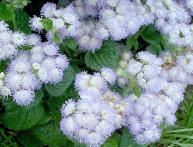

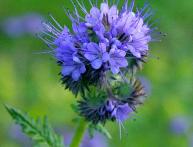

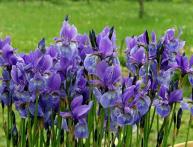
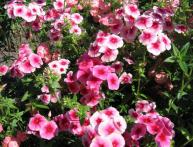
Comments
Of course, not a single summer goes by without petunias. We love her very much. But we no longer breed them ourselves, since she is so delicate and susceptible to many diseases. We just buy a grown one, it’s convenient and the color is already visible right away)))